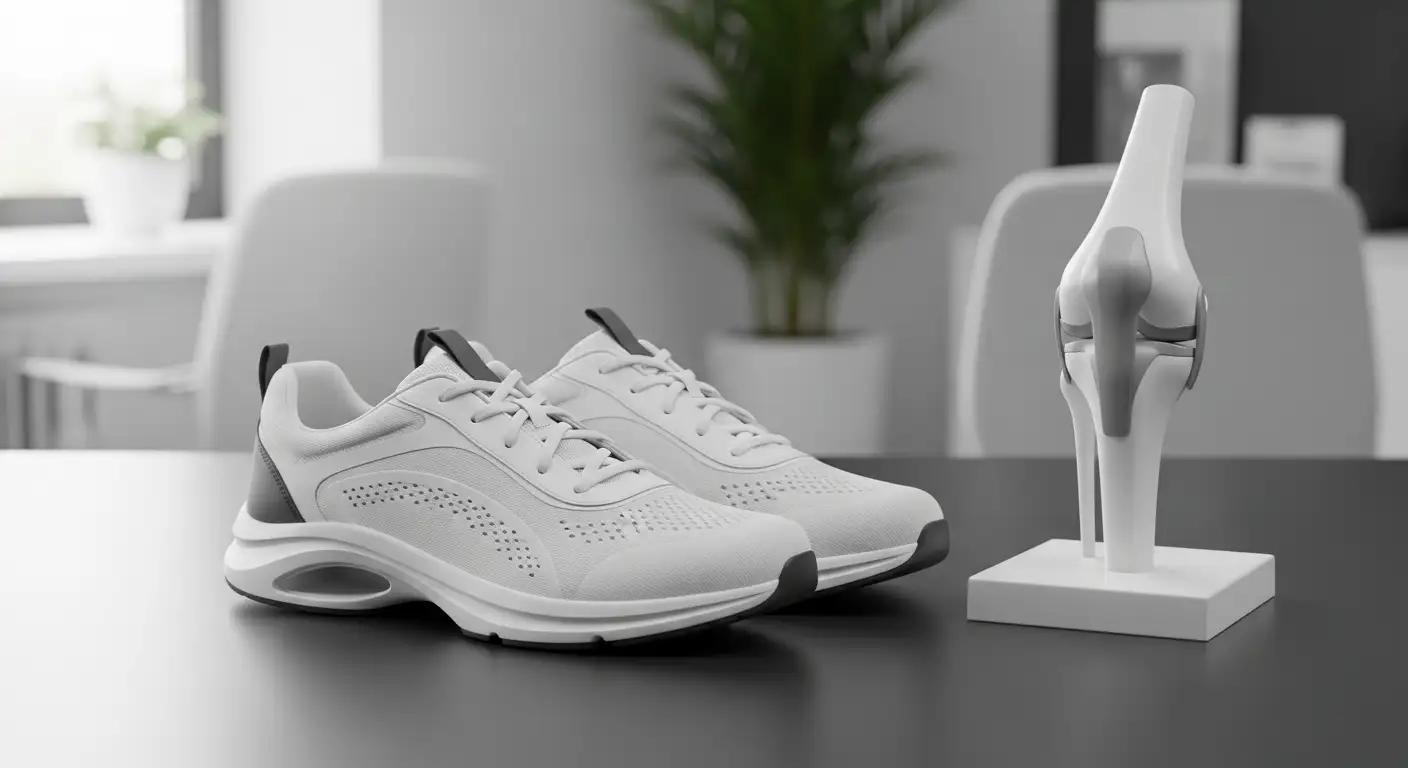Understanding GAE Procedure
With advancements in medical technology, new procedures are being developed to help manage pain and improve quality of life for patients. One such innovative approach is the Genicular Artery Embolization (GAE) procedure, primarily used to manage knee pain associated with osteoarthritis [1].
Introduction to GAE
GAE is a revolutionary procedure that offers a potential reduction in knee pain by targeting specific arteries in the knee. It has emerged as a promising treatment option for knee pain resulting from osteoarthritis, especially for patients who have not found relief from traditional interventions such as medications, physical therapy, and joint injections.

The GAE procedure primarily targets the genicular arteries, which supply blood to the synovium and other structures within the knee joint. By doing so, it aims to reduce inflammation and pain associated with osteoarthritis. The development and refinement of GAE have opened new avenues for the treatment of knee osteoarthritis, particularly as the prevalence of the condition rises with the aging population [1].
Minimally Invasive Approach
What sets the GAE procedure apart is its minimally invasive nature. The procedure generally takes between one to two hours and is performed by specialists in vascular and interventional radiology. It begins with the administration of moderate twilight sedation to ensure patient comfort. Following the procedure, most patients can return home the same day.
Patients typically begin to experience relief within two weeks as the inflammation in the lining of the knee subsides. This minimally invasive approach offers a safer, quicker, and more comfortable alternative to traditional surgical interventions, transforming the lives of patients suffering from osteoarthritis-related knee pain. The GAE procedure represents a significant step forward in the treatment of knee osteoarthritis, providing relief and an improved quality of life for patients.
Benefits of GAE for Knee Pain
Genicular artery embolization (GAE) is a treatment option that has shown considerable promise for patients suffering from knee pain, especially those caused by osteoarthritis. This procedure offers several benefits, including targeting arteries for pain reduction and serving as an alternative to traditional treatments.
Targeting Arteries for Pain Reduction
One of the primary advantages of the GAE procedure is its ability to target the genicular arteries. These arteries supply blood to the synovium and other structures within the knee joint. By embolizing these arteries, the GAE procedure can reduce inflammation and the associated pain caused by osteoarthritis.
Furthermore, a study published on PubMed Central indicates that GAE using permanent microspheres resulted in significant improvements in pain and function at 3 months and 1 year. The mean visual analogue scale (VAS) score, which measures pain intensity, improved from 60 at baseline to 36 at 3 months and 45 at 1 year.
Alternative to Traditional Treatments
GAE has emerged as an alternative to traditional interventions for knee pain resulting from osteoarthritis. These traditional methods including medications, physical therapy, and joint injections, may not provide sufficient relief for all patients.
The application of GAE as a treatment option is particularly significant given the rising prevalence of knee osteoarthritis within the aging population. With an 84% technical success rate of accessing and embolizing the target genicular arteries, GAE offers a viable and effective alternative for patients who have not found relief from traditional methods.
The benefits of GAE extend beyond pain reduction, encompassing improved function in daily activities and overall quality of life. Ongoing research continues to explore and validate these benefits, contributing to the growing acclaim of GAE as a transformative procedure for knee pain.
Process of Genicular Artery Embolization
Understanding the procedure and what to expect during recovery can help patients make informed decisions about their healthcare. The Genicular Artery Embolization (GAE) procedure has been designed with patient comfort and safety in mind.
Procedure Overview
The GAE procedure is a minimally invasive approach to addressing knee pain. It begins with the administration of moderate twilight sedation to ensure patient comfort. The procedure generally takes between one to two hours, with the technical success rate of accessing and embolizing the target genicular arteries being 84%.
During the procedure, permanent microspheres are utilized to embolize the genicular arteries, a technique that has proven to be both safe and technically achievable in patients with mild to moderate knee osteoarthritis. After the procedure, patients typically return home the same day [1].
Recovery and Results
Patients undergoing GAE often begin to experience relief within two weeks as the inflammation in the lining of the knee subsides. As per the data available, GAE with permanent microspheres leads to significant improvement in pain and function at 3 months and 1 year. The mean visual analogue scale (VAS) score improved from 60 at baseline to 36 at 3 months and 45 at 1 year. All Knee Injury and Osteoarthritis Outcome Score (KOOS) subscales, except function in daily living, showed a significant improvement at 6 weeks, 3 months, and 1 year.
The adverse events associated with GAE using permanent microspheres were mild and self-limiting in nature. For instance, four patients experienced mild skin discoloration over the embolized territory, which resolved within 3 weeks. One patient experienced a small groin hematoma. There were no reported cases of osteonecrosis [2].
Furthermore, the Whole-Organ Magnetic Resonance Imaging Score (WORMS) analysis showed a significant improvement in synovitis after GAE, but a deterioration in osteophytes and bone attrition. Four patients experienced significant deterioration in osteophytes and bone attrition, but reported an improvement in pain scores. Further investigation is needed to understand these imaging changes after the GAE procedure.
In summary, the GAE procedure offers a promising solution for those suffering from knee pain, with results indicating significant improvement in pain and functionality post-procedure.
Safety and Efficacy of GAE
Understanding the safety and efficacy of the genicular artery embolization (GAE) procedure is crucial for those considering it as a treatment option for knee osteoarthritis. In this section, we will discuss patient outcomes and potential adverse events associated with this minimally invasive procedure.
Patient Outcomes
Recent studies have shown promising results regarding the efficacy of GAE in treating mild to moderate knee osteoarthritis. According to a study published on PubMed Central, GAE using permanent microspheres resulted in significant improvements in pain and function at 3 months and 1 year post-procedure.
All Knee Injury and Osteoarthritis Outcome Score (KOOS) subscales, except function in daily living, showed a significant improvement at 6 weeks, 3 months, and 1 year.
Simultaneously, patient satisfaction with the GAE procedure was high, with a positive response to satisfaction questionnaires reported by 75% of patients. This data suggests that GAE can be an effective treatment for those struggling with knee pain due to osteoarthritis.
Adverse Events and Complications
While the GAE procedure carries significant benefits, it's also important to understand potential complications. Adverse events associated with GAE using permanent microspheres were mild and self-limiting, as per the same PubMed Central study.
Four patients experienced mild skin discoloration over the embolized territory, which resolved within 3 weeks. One patient experienced a small groin hematoma. Importantly, no cases of osteonecrosis were reported.
In terms of imaging changes after GAE, Whole-Organ Magnetic Resonance Imaging Score (WORMS) analysis showed a significant improvement in synovitis. However, a deterioration in osteophytes and bone attrition was noted in four patients. These patients, despite the imaging changes, reported an improvement in pain scores.
These results underscore the importance of further investigation to fully understand the imaging changes after GAE. Nevertheless, the high satisfaction rates and significant improvements in pain and function suggest that GAE can be a safe and effective treatment for knee osteoarthritis.
Ongoing Research on GAE
The medical community is actively engaged in research to further understand the intricacies and potential of the GAE procedure. This involves ongoing clinical trials and future directions that aim to evaluate its efficacy, safety, and potential applications.
Clinical Trials
Several clinical trials are underway to deepen the understanding of the GAE procedure. Prof. Little is leading the GENESIS 2 trial, which aims to identify differences in outcomes between GAE and a placebo group. In another trial, the MOTION trial, led by Dr. Sandeep Bagla, outcomes of GAE are compared to those of steroid injections. The results of these studies will be pivotal in determining the benefits of GAE vis-à-vis observation or steroid injections Endovascular Today.
The GAUCHO trial in Brazil is another significant study that compares the safety and efficacy of two embolic agents, IPM/CS, and microspheres, specifically for GAE in patients with knee osteoarthritis. The primary endpoints for this trial include improvement in symptoms, reduction in pain score, and an increase in quality of life scores Endovascular Today.
Future Directions
While current data, primarily derived from noncontrolled cohort studies, indicate that GAE is a safe procedure with responders experiencing a dramatic reduction in pain and improvement in function within the first three months after the procedure, there remains a need for more controlled data. There is a recognized need for sham-controlled trials to confirm the efficacy of the GAE procedure Endovascular Today.
The future of GAE research is likely to focus on addressing these data gaps, along with exploring the potential for expanding the application of GAE to other medical conditions. As the body of research grows, the understanding of the GAE procedure will continue to evolve, potentially leading to more widespread adoption and refinement of this minimally invasive treatment option.
Technical Aspects of GAE
The Genicular Artery Embolization (GAE) procedure is an innovative technique that holds promise for patients suffering from knee pain. Understanding the technical aspects of this procedure can provide insights into its effectiveness and safety.
Embolic Agents and Devices
One of the key elements that influence the success of the GAE procedure involves the selection of suitable embolic agents and devices. In general, the preferred embolic agents for GAE are microspheres with a calibration between 100-300 µm [3].
Other essential devices used in this procedure include a diagnostic catheter, an internal mammary catheter, a microcatheter, and a guidewire. The use of these devices contributes to the overall safety and feasibility of the GAE procedure, making it a potential treatment option for patients who haven't seen improvement with other conservative treatments.
Key Considerations in Practice
Implementing the GAE procedure in practice requires a careful evaluation of its safety and efficacy. Current clinical trials, such as the GAUCHO trial in Brazil, are comparing the safety and efficacy of two embolic agents, IPM/CS and microspheres, for GAE in patients with knee osteoarthritis [3].
The primary endpoints of these trials include improvement in symptoms, pain score reduction, and increase in quality of life scores. For example, GAE with permanent microspheres has shown significant improvement in pain and function at 3 months and 1 year. The mean visual analogue scale (VAS) score improved from 60 at baseline to 36 at 3 months and 45 at 1 year [2].
Adverse events associated with GAE using permanent microspheres are usually mild and self-limiting, contributing to the safety profile of this procedure.
Understanding the technical aspects of the GAE procedure, including the use of embolic agents and devices, along with the safety and efficacy considerations, are crucial for successful patient outcomes. Ongoing research and clinical trials continue to build upon the evidence and practice of this promising procedure, potentially transforming the lives of patients with knee pain.
References
[1]: https://reneweugene.com/genicular-artery-embolization/
[2]: https://www.ncbi.nlm.nih.gov/pmc/articles/PMC8172391/
[3]: https://evtoday.com/articles/2024-feb/genicular-artery-embolization-building-evidence-and-practice/
[4]: https://nationalvascularphysicians.com/benefits-of-gae-for-knee-pain/
[5]: https://www.uclahealth.org/medical-services/radiology/interventional-radiology/treatments-procedures/genicular-artery-embolization-gae





